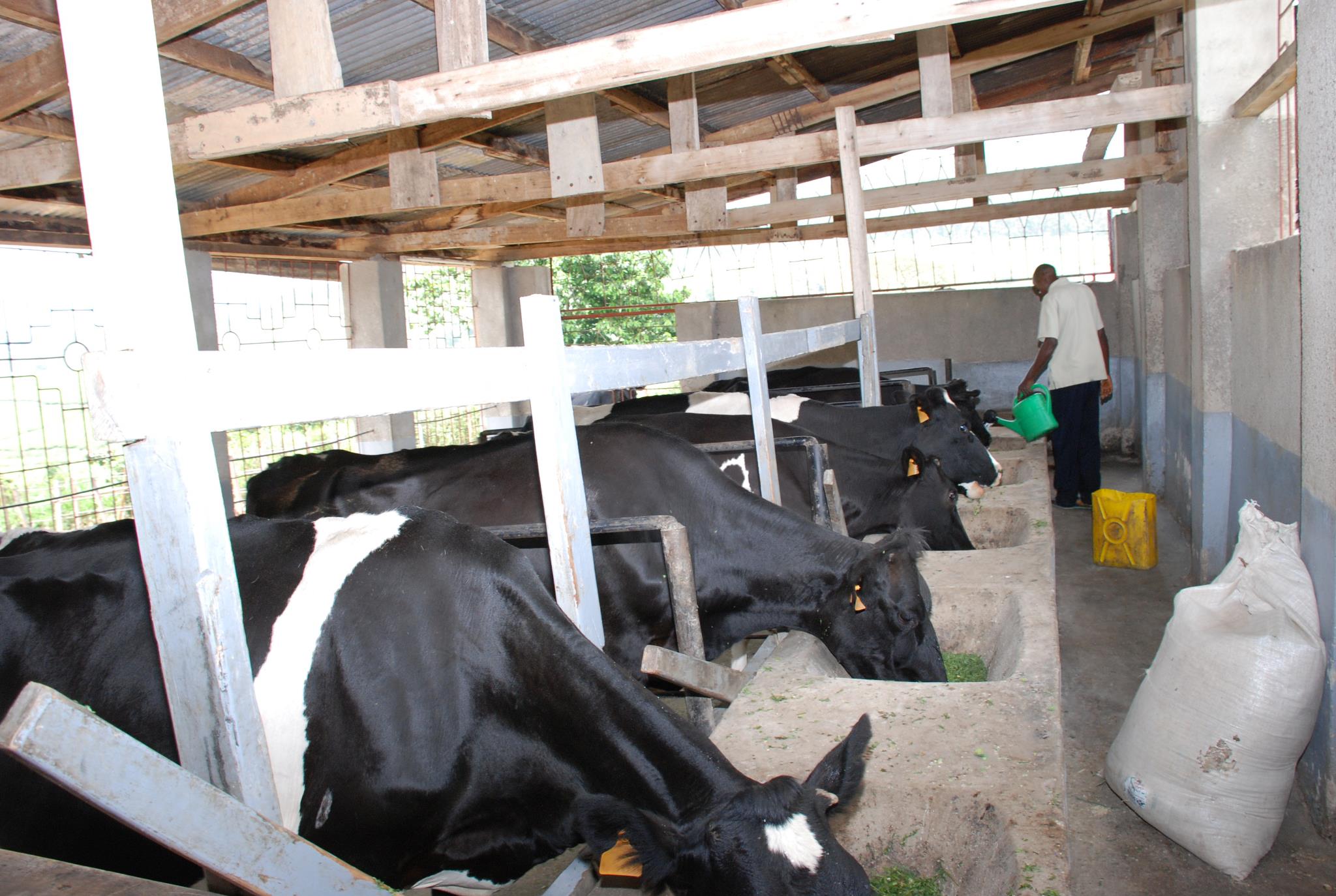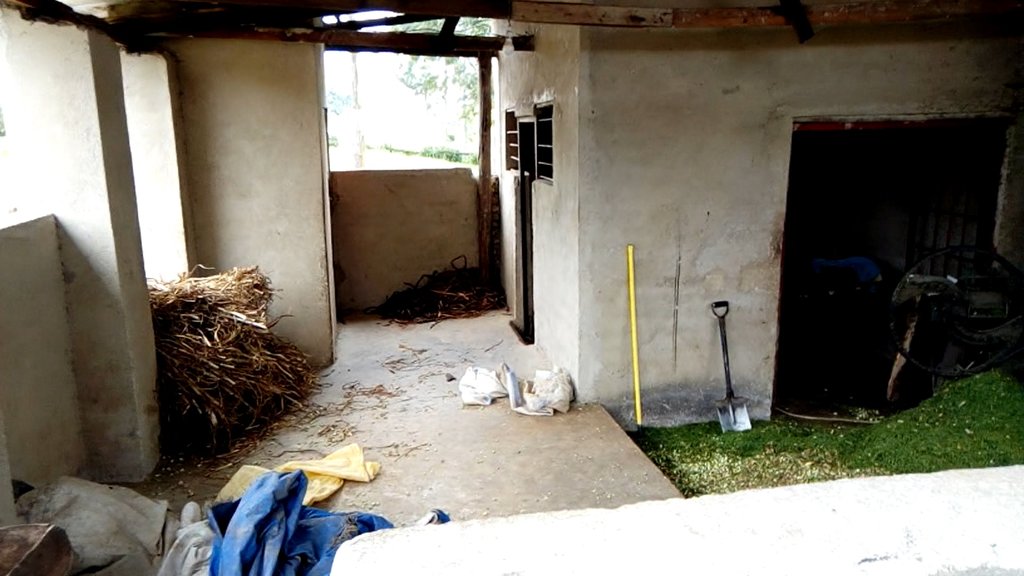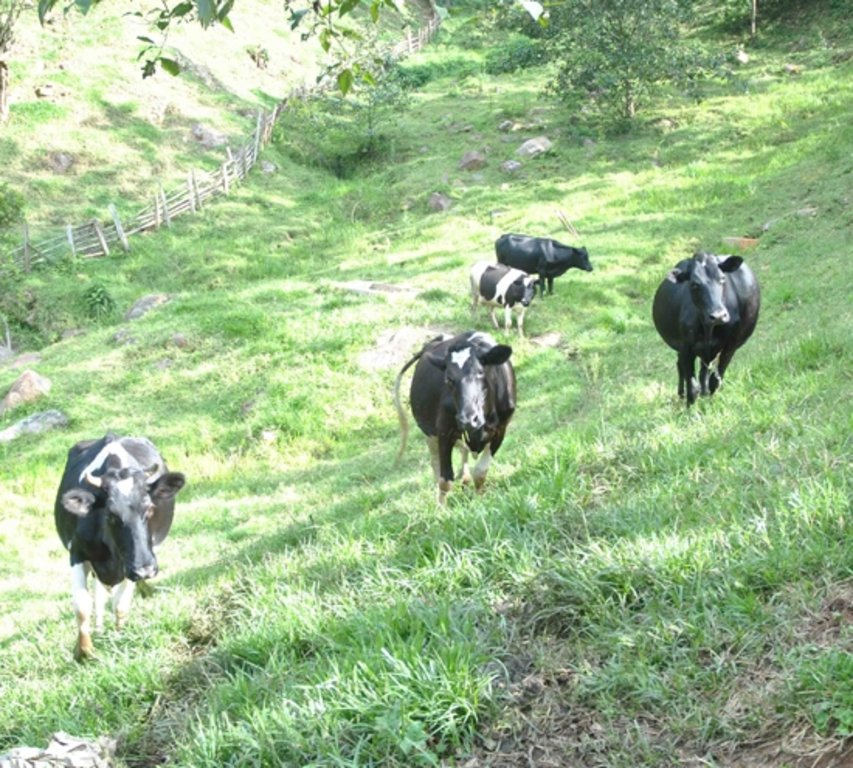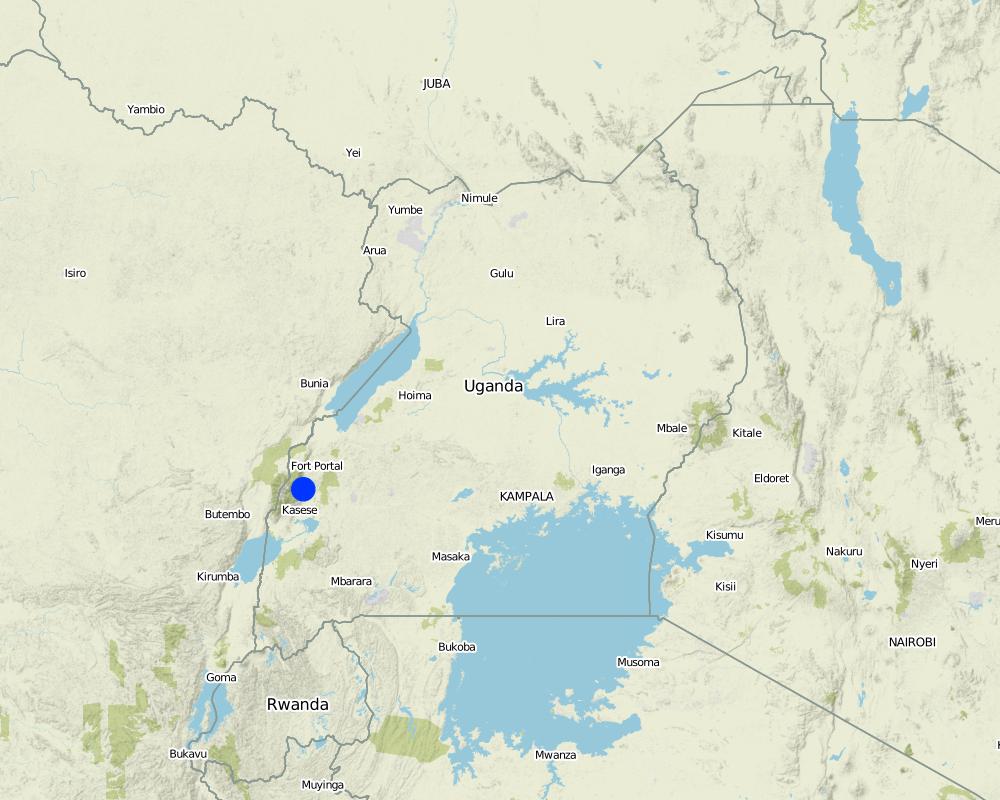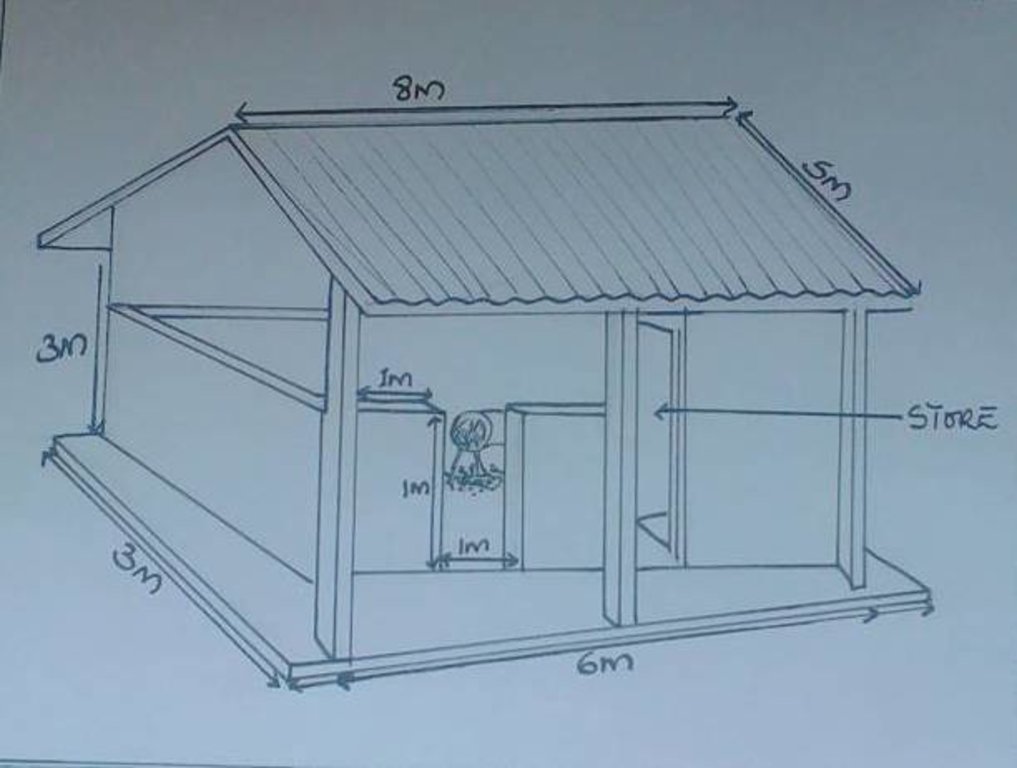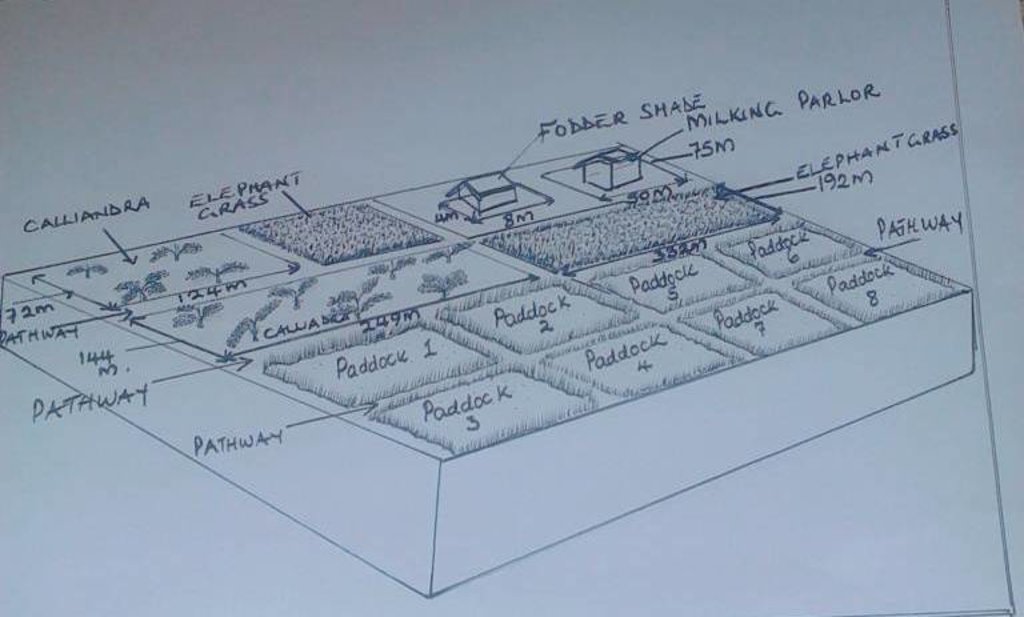Dairy cattle fed with supplementary fodder [乌干达]
- 创建:
- 更新:
- 编制者: Aine Amon
- 编辑者: Aine Amon, Drake Mubiru
- 审查者: Rima Mekdaschi Studer, Hanspeter Liniger, Donia Mühlematter
Ebinyasi bye ente
technologies_3367 - 乌干达
- Dairy cattle fed with supplementary fodder: Aug. 10, 2018 (inactive)
- Dairy cattle fed with supplementary fodder: Aug. 22, 2019 (public)
- Dairy cattle fed with supplementary fodder : June 20, 2018 (inactive)
- Dairy cattle fed with supplementary fodder : June 20, 2018 (inactive)
- Cattle Fodder processing: June 15, 2018 (inactive)
- Cattle Fodder processing: May 21, 2018 (inactive)
查看章节
全部展开 全部收起1. 一般信息
1.2 参与该技术评估和文件编制的资源人员和机构的联系方式
关键资源人
土地使用者:
有助于对技术进行记录/评估的项目名称(如相关)
Scaling-up SLM practices by smallholder farmers (IFAD)有助于对技术进行记录/评估的机构名称(如相关)
National Agricultural Research Organisation (NARO) - 乌干达1.3 关于使用通过WOCAT记录的数据的条件
(现场)数据是什么时候汇编的?:
19/01/2018
编制者和关键资源人员接受有关使用通过WOCAT记录数据的条件。:
是
1.4 所述技术的可持续性声明
这里所描述的技术在土地退化方面是否存在问题,导致无法被认为是一种可持续的土地管理技术?:
否
1.5 请参阅有关SLM方法的问卷
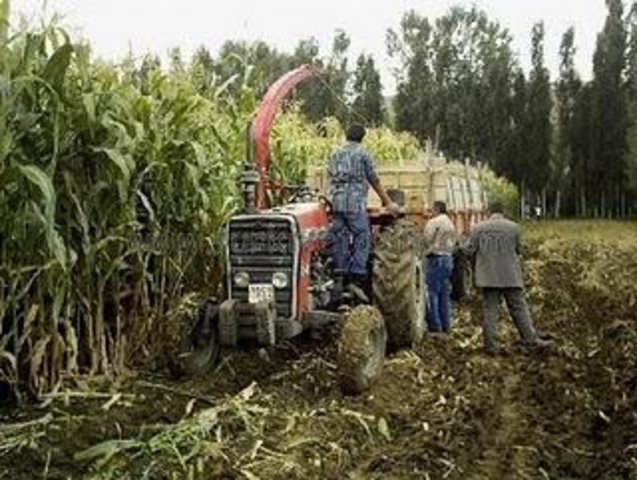
Fodder Crops Production [土耳其]
To grow different fodder crop species (leguminous and graminous) for feeding livestock
- 编制者: Unknown User
2. SLM技术的说明
2.1 技术简介
技术定义:
Elephant grass (Pennisteum purpureum) and calliandra (Calliandra calothyrsus), are harvested and chopped using a chaff cutter to produce fodder for dairy cows. The chaff is then mixed with cotton seed cake, molasses and maize bran to improve palatability and nutrient quality for dairy cows. The cattle graze in paddocks during the day and receive the fodder at evening milking.
2.2 技术的详细说明
说明:
High quality fodder for livestock is made by mixing chaff of elephant grass (Pennisteum purpureum) and calliandra (Calliandra calothyrsus) with maize bran, cotton seed cake and molasses. These fodder pastures are grown on a 10 acre piece of land and harvested twice a week for chopping into chaff. For calliandra (a leguminous tree), leaves are harvested while elephant grass is cut at ground level. This vegetation is transported to the electric chaff cutter by tractor. At its best, the chaff is evenly cut, free of dust, of good colour and has a fresh aroma. The chaff is chopped into small pieces which allows for easy mixing with supplements. Chaff in Uganda can be produced on farm or purchased from commercial chaff cutting mills, which grow pastures and process them for sell to farmers during pasture scarcity in the long dry spells.
The farmer in Bushenyi District learnt the technology at a trade show. Today, he processes fodder for his 50 dairy cattle under an intensive system. His grazing/paddock land is about 20 hectares in total and is divided into 8 paddocks which are used in rotation. The cows graze for 8 hours daily. Every evening their diet is supplemented with the processed fodder in the milking parlour. The fields are allowed to mature at intervals to produce a continuous supply of grass for fodder throughout the growing season. The fodder processing procedure includes:
i) Cutting mature pasture grass at ground level and collecting the grass from the fields;
ii) Transportation of elephant grass and calliandrafrom the fields to the fodder shed;
iii) Offloading and sorting of pasture grass/ fodder into different classes of similar diameter and lengths for easy handling during chaff cutting;
iv) Chopping of pastures/ fodder into small pieces using the electric chaff cutter;
v) Mixing the chaffed fodder, cotton seed cake, molasses and maize bran to improve the palatability and nutrient quality of the chaffed fodder.
vi). Putting the processed fodder into troughs for cattle to feed on during milking.
Processing enough pasture grass into chaff for cattle feeding is described by the farmer to be a relatively expensive and a labour intensive process. The key expenses in establishing the system include costs of buying fodder (if not readily available on the farm), purchasing a chaff cutter and buying supplements. The farmer requires 0.5 tonnes of chaffed fodder mixed with supplements to feed 50 dairy cows on a daily basis. The main costs are labour, fodder supplements, the electric chaff cutter, tractor hire and daily operation costs.
The fodder cut into small pieces mixes easily with supplements to make a well nutrient balanced ration. This is palatable and encourages cattle to eat non-selectively and without spilling,hence minimizing wastage. The processed fodder is easy to store in bags and can be kept on wooden pallets raised off ground in a cool store. The farmer notes that the chaffed fodder can further be processed into hay or silage for storage to be fed to cattle during the seasons of pasture scarcity, especially the long dry spells of early June to late August and early December to late February. The system enables the farmer to keep more productive animals on his land than he could using other feeding regimes: in other words this is an intensive system that maximizes production per unit area.
2.3 技术照片
2.4 技术视频
注释、简短说明:
The video features Elephant grass fodder being sorted at the fodder shade, the chaff cutter, chaffed fodder and a view of the feeding troughs at the milking parlor.
日期:
19/01/2018
位置:
Uganda, Bushenyi District, Kyamuhunga sub county
摄影师的名字:
Aine Amon
2.5 已应用该技术的、本评估所涵盖的国家/地区/地点
国家:
乌干达
区域/州/省:
Uganda, Western Region
有关地点的进一步说明:
Bushenyi District, Kyamuhunga sub county
Map
×2.6 实施日期
注明实施年份:
2016
如果不知道确切的年份,请说明大概的日期:
- 不到10年前(最近)
2.7 技术介绍
详细说明该技术是如何引入的:
- 在实验/研究期间
注释(项目类型等):
Chopping pastures for silage making.
3. SLM技术的分类
3.1 该技术的主要目的
- 改良生产
- 降低灾害风险
- 适应气候变化/极端天气及其影响
- 创造有益的经济影响
3.2 应用该技术的当前土地利用类型

牧场
集约放牧/饲料生产:
- 收割和携带/零放牧
- 改良牧场
注释:
The farmer has a 400 acres of land under cattle grazing, tea growing, pasture growing and fish farming.
3.3 有关土地利用的更多信息
该技术所应用土地的供水:
- 混合雨水灌溉
注释:
In the dry season the farmer irrigates with water from the valley.
每年的生长季节数:
- 2
牲畜密度(如相关):
50 cows on 22 hectares including the milking parlour, fodder shed and stores are established.
3.4 该技术所属的SLM组
- 畜牧业和牧场管理
- 农畜综合管理
- 改良植物品种/动物品种
3.5 技术传播
具体说明该技术的分布:
- 均匀地分布在一个区域
如果该技术均匀地分布在一个区域上,请注明覆盖的大致区域。:
- 0.1-1 平方千米
3.6 包含该技术的可持续土地管理措施

其它措施
注释:
The process is for making high quality pasture suplements for cattle.
3.7 该技术强调的主要土地退化类型

物理性土壤退化
- Pc:压实
- Pu:由于其他活动而导致生物生产功能的丧失

生物性退化
- Bc:植被覆盖的减少
- Bh:栖息地丧失

其它
注释:
Increased productivity per soil unit.
3.8 防止、减少或恢复土地退化
具体数量名该技术与土地退化有关的目标:
- 减少土地退化
- 适应土地退化
4. 技术规范、实施活动、投入和成本
4.1 该技术的技术图纸
4.2 技术规范/技术图纸说明
The key requirements for the system are the fodder shed, chaff cutter and sources of pastures. The fodder shed of 3×6×6m was constructed close to the milking parlour for efficiency. A store of 2×2×2m for the chaff cutter and other equipment was constructed in one of the corners of the shed. Apart from the store, all other walls are constructed up to one meter height leaving two metres open to the roof for ventilation.
4.3 有关投入和成本计算的一般信息
具体说明成本和投入是如何计算的:
- 每个技术区域
其它/国家货币(具体说明):
Uganda shillings
注明美元与当地货币的汇率(如相关):1美元=:
3638.0
注明雇用劳工的每日平均工资成本:
10000
4.4 技术建立活动
| 活动 | 措施类型 | 时间 | |
|---|---|---|---|
| 1. | Clearing and Preparation of the garden. | 管理 | Best done at the end of the dry season. |
| 2. | Planting of the desired improved pastures for fodder. | 管理 | At the start of the rain season. |
| 3. | Construction of the fodder shed and store. | 管理 | Before the pastures are mature enough to start harvesting. |
| 4. | Purchase and establishment of the chaff cutter. | 管理 | After establishment of the fodder shelter and store. |
4.5 技术建立所需要的费用和投入
| 对投入进行具体说明 | 单位 | 数量 | 单位成本 | 每项投入的总成本 | 土地使用者承担的成本% | |
|---|---|---|---|---|---|---|
| 劳动力 | Labor | man/day | 12.0 | 10000.0 | 120000.0 | |
| 设备 | Hoe | Pieces | 2.0 | 15000.0 | 30000.0 | |
| 设备 | Panga | Pieces | 1.0 | 5000.0 | 5000.0 | |
| 设备 | Hammer | pieces | 1.0 | 5000.0 | 5000.0 | |
| 设备 | wheel burrow | Pieces | 1.0 | 5000.0 | 5000.0 | |
| 设备 | Tractor hire | Hours | 10.0 | 50000.0 | 500000.0 | |
| 设备 | chaff cutter | unit | 1.0 | 1500000.0 | 1500000.0 | |
| 施工材料 | Metal rods | Pieces | 4.0 | 20000.0 | 80000.0 | |
| 施工材料 | Cement | 50kg bags | 20.0 | 29000.0 | 580000.0 | |
| 施工材料 | Sand | Tonnes | 2.5 | 70000.0 | 175000.0 | |
| 施工材料 | Bricks | Pieces | 10000.0 | 150.0 | 1500000.0 | |
| 施工材料 | Timber | Pieces | 20.0 | 5000.0 | 100000.0 | |
| 施工材料 | Iron sheets | Sheets | 24.0 | 42000.0 | 1008000.0 | |
| 施工材料 | Gravel | Trips | 1.0 | 75000.0 | 75000.0 | |
| 技术建立所需总成本 | 5683000.0 | |||||
注释:
Bio gas solutions Uganda funded 10% ie establishment of mixing chamber for biogas which works as the mixing chamber for the irrigation fertilizer technology.
4.6 维护/经常性活动
| 活动 | 措施类型 | 时间/频率 | |
|---|---|---|---|
| 1. | Cutting and collecting of mature elephant grass (Pennisteum purpureum),and calliandra (Calliandra calothyrsus) to one point in the fields. | 管理 | each morning. |
| 2. | Transportation of pasture grass to the fodder shed. | 管理 | After cutting. |
| 3. | Offloading and sorting of pasture at the fodder shed. | 管理 | |
| 4. | Chopping of grass into small units using the electric chaff cutter. | 管理 | |
| 5. | Mixing the chaff with supplements. | 管理 | When the pastures are well chopped. |
| 6. | Feeding the processed fodder in troughs. | 管理 | 30 minutes to milking time at dusk. |
4.7 维护/经常性活动所需要的费用和投入(每年)
| 对投入进行具体说明 | 单位 | 数量 | 单位成本 | 每项投入的总成本 | 土地使用者承担的成本% | |
|---|---|---|---|---|---|---|
| 劳动力 | Labor | Men/month | 4.0 | 10000.0 | 40000.0 | 100.0 |
| 设备 | Panga | |||||
| 其它 | Elephant grass (Pennisteum purpureum) and calliandra (Calliandracalothyrsus) | tonnes | 0.5 | 100000.0 | 50000.0 | 100.0 |
| 其它 | Maize bran | tonnes | 0.0625 | 88000.0 | 5500.0 | 100.0 |
| 其它 | Molasses | tonnes | 0.13 | 173000.0 | 22490.0 | 100.0 |
| 其它 | Cotton seed cake | tonnes | 0.0625 | 88000.0 | 5500.0 | 100.0 |
| 技术维护所需总成本 | 123490.0 | |||||
4.8 影响成本的最重要因素
描述影响成本的最决定性因素:
Establishing the fodder shade, purchasing the chaff cutter and daily operation costs.
5. 自然和人文环境
5.1 气候
年降雨量
- < 250毫米
- 251-500毫米
- 501-750毫米
- 751-1,000毫米
- 1,001-1,500毫米
- 1,501-2,000毫米
- 2,001-3,000毫米
- 3,001-4,000毫米
- > 4,000毫米
有关降雨的规范/注释:
March to May and Sept to Nov
农业气候带
- 潮湿的
5.2 地形
平均坡度:
- 水平(0-2%)
- 缓降(3-5%)
- 平缓(6-10%)
- 滚坡(11-15%)
- 崎岖(16-30%)
- 陡峭(31-60%)
- 非常陡峭(>60%)
地形:
- 高原/平原
- 山脊
- 山坡
- 山地斜坡
- 麓坡
- 谷底
垂直分布带:
- 0-100 m a.s.l.
- 101-500 m a.s.l.
- 501-1,000 m a.s.l.
- 1,001-1,500 m a.s.l.
- 1,501-2,000 m a.s.l.
- 2,001-2,500 m a.s.l.
- 2,501-3,000 m a.s.l.
- 3,001-4,000 m a.s.l.
- > 4,000 m a.s.l.
说明该技术是否专门应用于:
- 不相关
5.3 土壤
平均土层深度:
- 非常浅(0-20厘米)
- 浅(21-50厘米)
- 中等深度(51-80厘米)
- 深(81-120厘米)
- 非常深(> 120厘米)
土壤质地(表土):
- 中粒(壤土、粉土)
土壤质地(地表以下> 20厘米):
- 中粒(壤土、粉土)
表土有机质:
- 中(1-3%)
5.4 水资源可用性和质量
地下水位表:
5-50米
地表水的可用性:
中等
水质(未处理):
不良饮用水(需要处理)
水的盐度有问题吗?:
否
该区域正在发生洪水吗?:
否
5.5 生物多样性
物种多样性:
- 中等
栖息地多样性:
- 中等
5.6 应用该技术的土地使用者的特征
定栖或游牧:
- 定栖的
生产系统的市场定位:
- 商业/市场
非农收入:
- 低于全部收入的10%
相对财富水平:
- 非常丰富
个人或集体:
- 个人/家庭
机械化水平:
- 机械化/电动
性别:
- 男人
土地使用者的年龄:
- 老年人
5.7 应用该技术的土地使用者拥有或租用的平均土地面积
- < 0.5 公顷
- 0.5-1 公顷
- 1-2 公顷
- 2-5公顷
- 5-15公顷
- 15-50公顷
- 50-100公顷
- 100-500公顷
- 500-1,000公顷
- 1,000-10,000公顷
- > 10,000公顷
这被认为是小规模、中规模还是大规模的(参照当地实际情况)?:
- 大规模的
5.8 土地所有权、土地使用权和水使用权
土地所有权:
- 个人,有命名
土地使用权:
- 个人
用水权:
- 个人
5.9 进入服务和基础设施的通道
健康:
- 贫瘠
- 适度的
- 好
教育:
- 贫瘠
- 适度的
- 好
技术援助:
- 贫瘠
- 适度的
- 好
就业(例如非农):
- 贫瘠
- 适度的
- 好
市场:
- 贫瘠
- 适度的
- 好
能源:
- 贫瘠
- 适度的
- 好
道路和交通:
- 贫瘠
- 适度的
- 好
饮用水和卫生设施:
- 贫瘠
- 适度的
- 好
金融服务:
- 贫瘠
- 适度的
- 好
6. 影响和结论性说明
6.1 该技术的现场影响
社会经济效应
生产
饲料生产
饲料质量
注释/具体说明:
Supplements are added to chaffed fodder
畜牧生产
注释/具体说明:
The grazing cows are supplemented with fodder at milking in the evining
生产故障风险
注释/具体说明:
Better quality and quantity pastures available for feeding livestock
收入和成本
农业投入费用
农业收入
注释/具体说明:
Increased milk production per cow
工作量
注释/具体说明:
Need to grow pasture grass and process them into chaffed supplemented fodder
生态影响
生物多样性:植被、动物
植被覆盖
生物量/地上C
注释/具体说明:
Cut and carry systems can drain the fields of nutrients if not replenished with fertilizer
有益物种
注释/具体说明:
Calliandra and elephant grass
减少气候和灾害风险
干旱影响
注释/具体说明:
It is possible to store and supplement livestock feed in the dry season if processed into hay
碳和温室气体的排放
注释/具体说明:
Pastures grown are carbon sinks
6.2 该技术的场外影响已经显现
下游淤积
注释/具体说明:
The pastures act as cover crops to regulate run off
对邻近农田的破坏
注释/具体说明:
Cattle have enough feed and therefore don’t need to trespass onto neighbors’ fields
6.3 技术对渐变气候以及与气候相关的极端情况/灾害的暴露和敏感性(土地使用者认为的极端情况/灾害)
渐变气候
渐变气候
| 季节 | 气候变化/极端天气的类型 | 该技术是如何应对的? | |
|---|---|---|---|
| 年温度 | 减少 | 不好 | |
| 季节性温度 | 旱季 | 增加 | 适度 |
| 年降雨量 | 减少 | 好 | |
| 季雨量 | 湿季/雨季 | 减少 | 好 |
气候有关的极端情况(灾害)
气象灾害
| 该技术是如何应对的? | |
|---|---|
| 局地暴雨 | 好 |
气候灾害
| 该技术是如何应对的? | |
|---|---|
| 干旱 | 不好 |
水文灾害
| 该技术是如何应对的? | |
|---|---|
| 滑坡 | 好 |
生物灾害
| 该技术是如何应对的? | |
|---|---|
| 流行病 | 不好 |
6.4 成本效益分析
技术收益与技术建立成本相比如何(从土地使用者的角度看)?
短期回报:
消极
长期回报:
积极
技术收益与技术维护成本/经常性成本相比如何(从土地使用者的角度看)?
短期回报:
消极
长期回报:
积极
6.5 技术采用
- 1-10%
如若可行,进行量化(住户数量和/或覆盖面积):
1
在所有采用这项技术的人当中,有多少人是自发地采用该技术,即未获得任何物质奖励/付款?:
- 90-100%
6.6 适应
最近是否对该技术进行了修改以适应不断变化的条件?:
否
6.7 该技术的优点/长处/机会
| 土地使用者眼中的长处/优势/机会 |
|---|
| The animals feed in the paddocks during the day and are supplemented with more palatable fodder at the milking parlor, to improve their diet. |
| The nutrient quality of the fodder is supplemented to make a more balanced ration for the animals. |
| Under this semi intensive farming system, more animals can be reared per unit area in contrast to a paddock-only system. |
| 编制者或其他关键资源人员认为的长处/优势/机会 |
|---|
| The farmer can further process the pastures into hay or silage for storage. |
| The animals are not so much affected by pasture scarcities. |
| There is chance to irrigate the pastures to cope with the long dry seasons. |
6.8 技术的弱点/缺点/风险及其克服方法
| 土地使用者认为的弱点/缺点/风险 | 如何克服它们? |
|---|---|
| Expensive to maintain. Production of enough grass at one go and storage for use in the next few days | Production of enough pastures at ago and storing them for use in the next few days. |
| 编制者或其他关键资源人员认为的弱点/缺点/风险 | 如何克服它们? |
|---|---|
| Need for labour for processing. Further mechanization of the process. | Further Mechanization of the process. |
7. 参考和链接
7.1 信息的方法/来源
- 实地考察、实地调查
1
- 与土地使用者的访谈
1
链接和模块
全部展开 全部收起链接

Fodder Crops Production [土耳其]
To grow different fodder crop species (leguminous and graminous) for feeding livestock
- 编制者: Unknown User
模块
无模块


